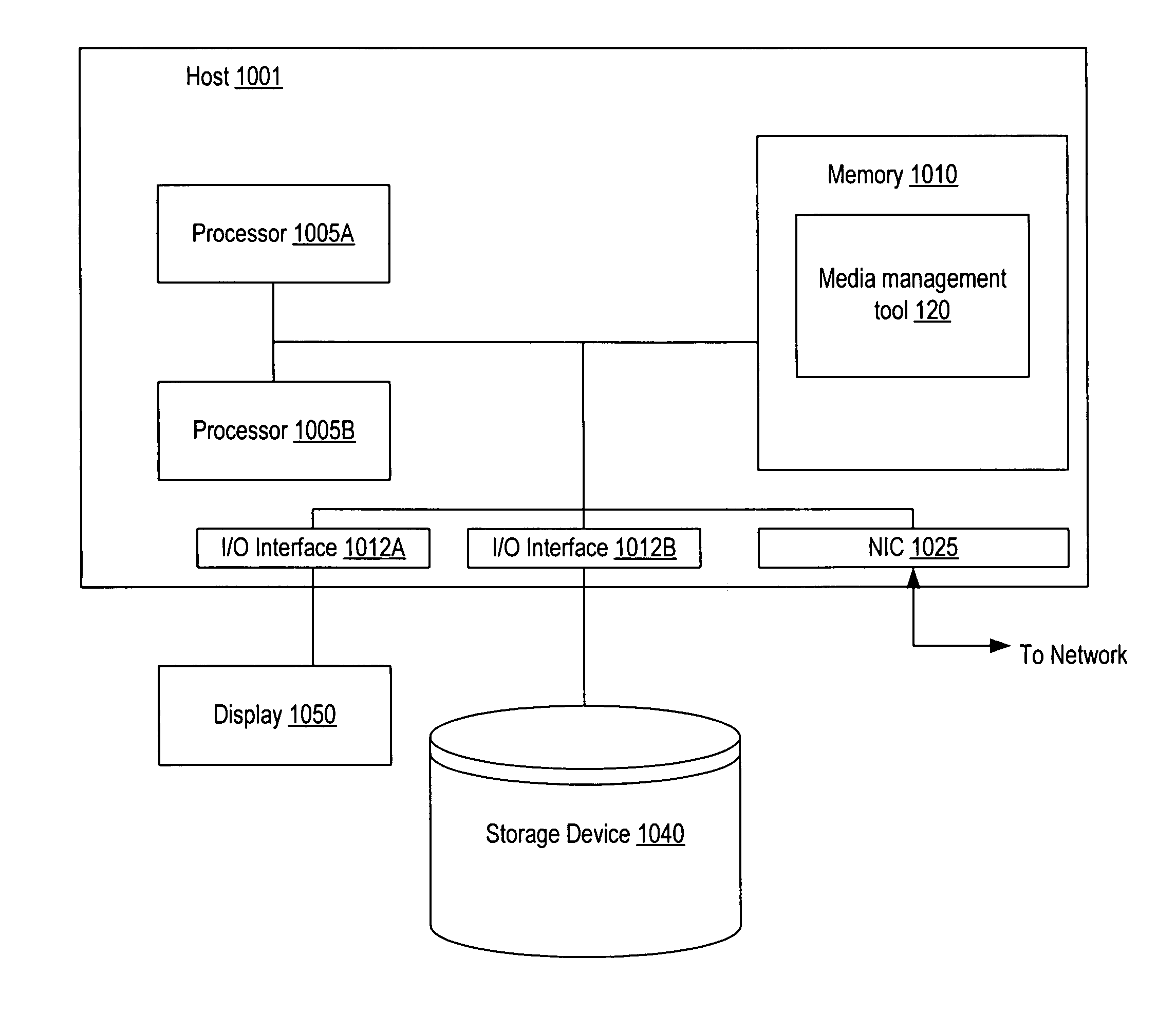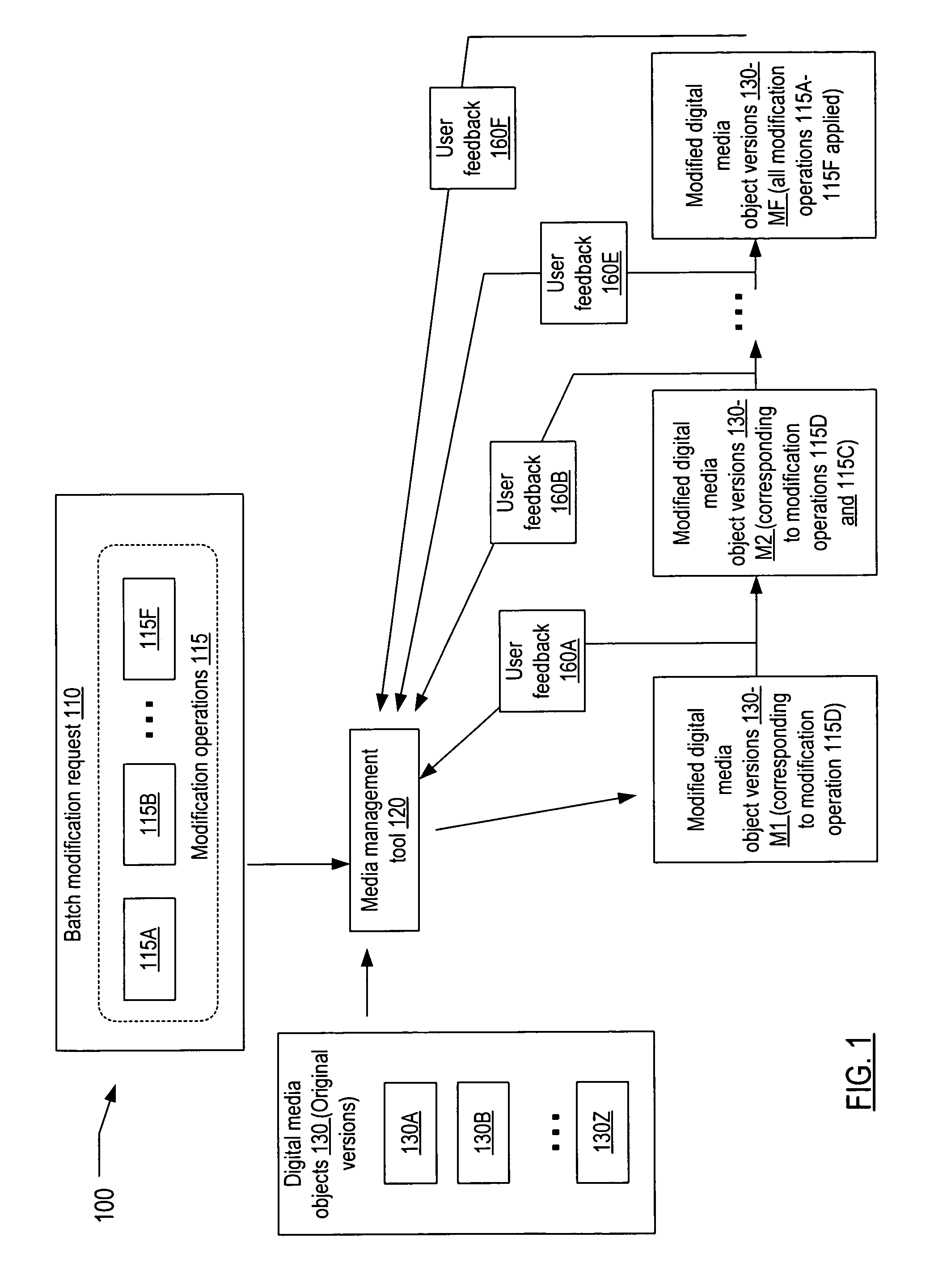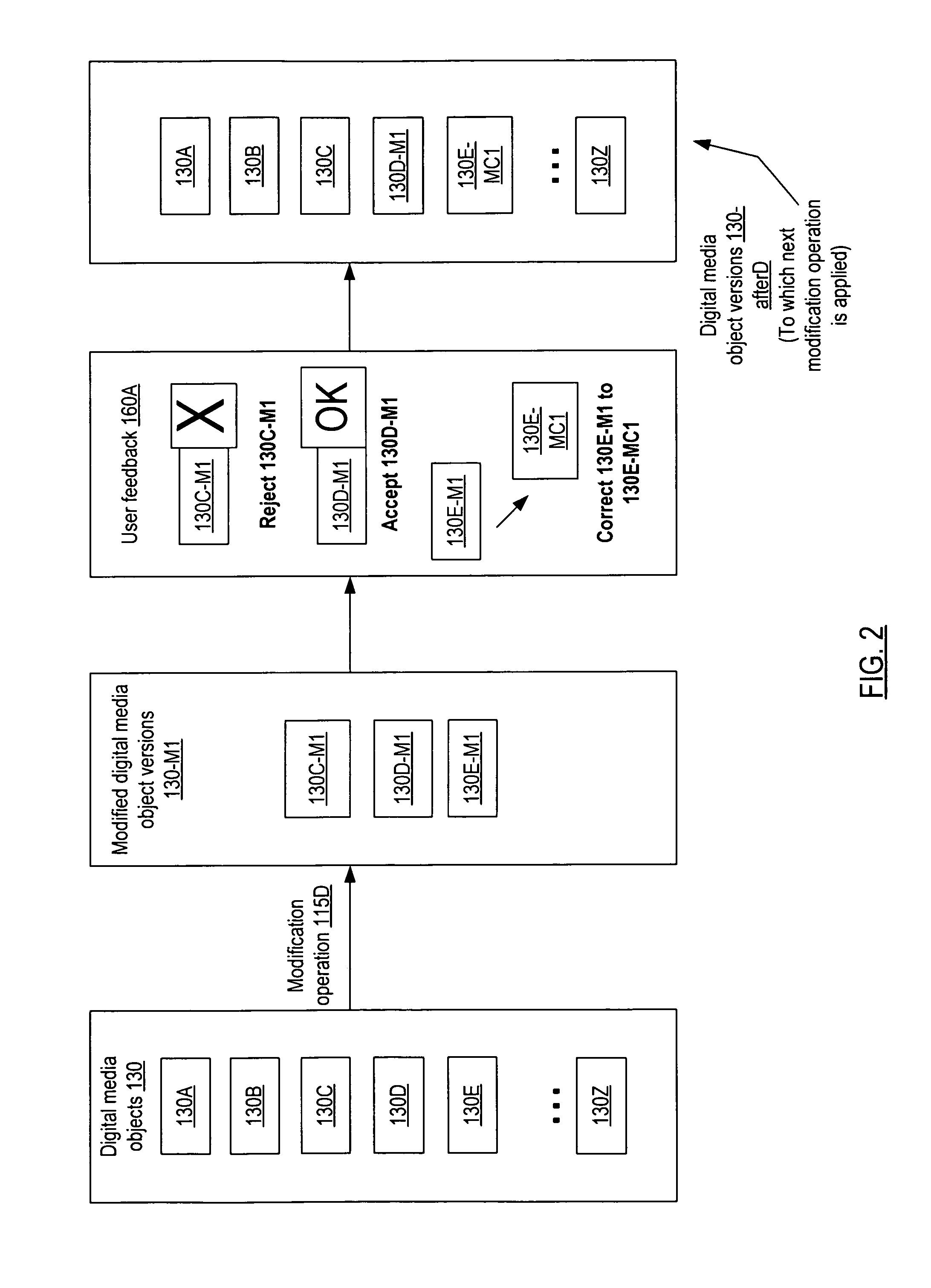Incremental batch-mode editing of digital media objects
batch-mode technology, applied in the field of computer systems, can solve the problems of batch-mode operation sometimes failing to provide desired results or improvements to a digital media object, requiring more time and effort than a typical user may desire, and reducing the total amount of processing, reducing the number of input operations, and saving users considerable time and effor
- Summary
- Abstract
- Description
- Claims
- Application Information
AI Technical Summary
Benefits of technology
Problems solved by technology
Method used
Image
Examples
Embodiment Construction
[0023]FIG. 1 is a block diagram illustrating one embodiment of a system 100. The system includes a plurality of digital media objects 130 (e.g., objects 130A-130Z) and a media management tool 120. Digital media objects 130 may include, for example, files representing photographs (still images), audio, video (moving images), computer-generated graphics, and / or multiple forms of media (e.g., a combination of photographs, text commentary and audio in a single object) in various embodiments. The media management tool 120 may be used to perform a number of different types of operations on the digital media objects 130 in different embodiments, including batch operations to be performed on specified groups of the digital media objects 130 and / or single-object operations to be performed on individual digital media objects 130. In the depicted embodiment, the media management tool 120 may be configured to receive a batch modification request 110 indicating a plurality of modification operat...
PUM
 Login to View More
Login to View More Abstract
Description
Claims
Application Information
 Login to View More
Login to View More - R&D
- Intellectual Property
- Life Sciences
- Materials
- Tech Scout
- Unparalleled Data Quality
- Higher Quality Content
- 60% Fewer Hallucinations
Browse by: Latest US Patents, China's latest patents, Technical Efficacy Thesaurus, Application Domain, Technology Topic, Popular Technical Reports.
© 2025 PatSnap. All rights reserved.Legal|Privacy policy|Modern Slavery Act Transparency Statement|Sitemap|About US| Contact US: help@patsnap.com



